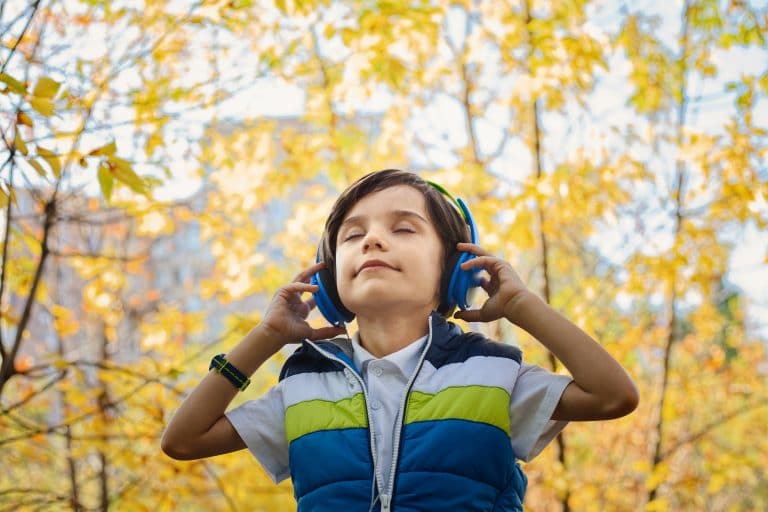Whether they’re listening to music, watching an educational video or checking in with their teacher during shelter-in-place orders, kids and teens are spending more time than ever with a set of headphones on. Without proper safety measures, this can result in hearing loss, communication problems, ear-ringing, fullness, sensitivity and pain. This is why it’s important to protect your children from headphone misuse.
Are Children’s Headphones Safe?
Children’s headphones are marketed as a safer alternative for young ears, featuring comfy earpads and a volume cap at 85 dB.
Eighty-five dB is considered a safe threshold when it comes to occupational noise exposure – that is, any sound over 85 dB can cause permanent damage if someone is exposed longer than eight hours a day. But this number doesn’t take into account the amount of time many kids actually spend wearing headphones or earbuds.
“Treating 85 decibels as a safe level makes no sense at all,” explained Rick Neitzel, Ph.D., associate professor of environmental health sciences at the University of Michigan. “Exposure is not just intensity — it is also how long it lasts and how frequently it occurs… Ignoring the time is missing the point. This 85-decibel number has achieved mythical status not because it is safe but because it is one of the few ways that occupational noise is regulated.”
How Loud Is Too Loud?
Unfortunately, this answer is not exactly straight-forward; as Dr. Neitzel expressed, volume limits must also take into account the duration of exposure.
According to Drs. Neirzel and Fligor, co-authors of a recent paper on recreational sound exposure, 70 dB is a safer upper limit for unlimited listening. As long as exposure is limited to less than eight hours daily, a more liberal upper limit is 83 dB, with 75 dB being a realistic compromise.
But sound exposure does not come from headphones alone. If your child participates in other noisy activities – like practicing an instrument or mowing the lawn – the risk of noise of exposure can compound.
How to Practice Safe Listening
There are several measures parents can take to ensure their children are practicing safe listening habits:
- Check to make sure you can’t hear sound leaking from your child’s headphones.
- Your child should be able to hear when they are being spoken to while listening to music. If they can’t, it’s too loud.
- Have your child take breaks from listening. A good rule of thumb is to use headphones for no more than 60 minutes at a time at no more than 60 percent of the device’s max volume.
- Use parental controls to control the max volume setting.
- Invest in noise-cancelling headphones, which eliminate background noise for easier listening at a lower volume.
- Schedule a hearing screening every three years.
For more information or to schedule an appointment, call Audiology Center Northwest today.
